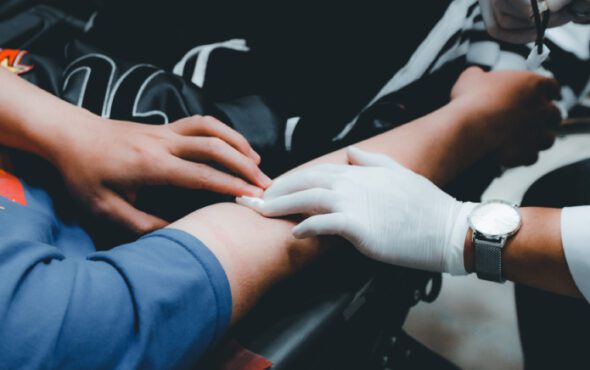
The government has announced opt-out blood tests for HIV, Hepatitis B and Hepatitis C will be rolled out to a further 46 accident and emergency departments (A&E) across England.
This is part of its pledge to eradicate new HIV cases in England by 2030.
Ahead of a speech by Sir Elton John at an event in Parliament on 29 November, Victoria Atkins, Health Secretary, announced that the new £20 million programme would lead to earlier diagnosis and treatment.
Opt-out blood testing has been trialled for 18 months within 34 A&Es across London, Greater Manchester, Sussex and Blackpool – all of which were identified by the NHS as areas with a “very high” prevalence of HIV.
As a result of the trial 3,500 cases of the three bloodborne infections and 580 HIV cases have been identified since April 2022, according to NHS figures.
The new funding from the National Institute for Health and Care Research will facilitate the continued roll-out in West Midlands, Liverpool and Leicester where HIV prevalence is classed as “high”.
READ MORE: More gay and bisexual men got tested for HIV than ever before in England last year.
“Today’s announcement is the testing turbo boost that’s needed if we are to end new HIV cases by 2030,” Richard Angell, Chief Executive of Terrence Higgins Trust, told GAY TIMES.
“It’s hugely significant that an additional two million HIV tests will be carried out in A&Es over the next year thanks to a temporary but wholesale expansion of opt-out HIV testing to 46 additional hospitals.
“With this landmark investment, opt-out HIV testing in A&Es will account for more than half of all tests in England. This major ramping up of testing is absolutely crucial to find the 4,400 people still living with undiagnosed HIV.
“The evidence is crystal clear: testing everyone having a blood test in Emergency Departments for HIV works. It helps diagnose people who wouldn’t have been reached via any other testing route and who have often been missed before.
“It also saves the NHS millions, relieves pressure on the health service and helps to address inequalities with those diagnosed in A&E more likely to be of Black ethnicity, women and older people.”
We did it!
The Government will expand opt-out HIV testing to 46 more hospitals across England – millions more people will now be tested for HIV when they go to A&E.
Alongside our incredible partners and supporters, we campaigned hard for this and won.
Here’s how we did it. pic.twitter.com/5BhBv0j2aK
— Terrence Higgins Trust (@THTorguk) November 30, 2023



